REUNIFICATION HALL
» Welcome to Ho Chi Minh City (Otherwise Known as Saigon)
» Things to See in Ho Chi Minh City (A-Z): Cholon
» Cao Dai Temple
» Mosques
» Reunification Hall
» Saigon Zoo
» Street Markets
» Temples
» Things to Buy: Vietnamese Modern Art
» Things to Eat in Ho Chi Minh City: Restaurant Guide
» Places to Party in Ho Chi Minh City: Bars and Clubs
» Places to Stay in Ho Chi Minh City: Saigon Hotels
»
Getting There: Ho Chi Minh City's Tan Son Nhat International Airport
» Further Afield: Phu Quoc Island
» Buying Real Estate in Vietnam?
» Learning Basic Travel Vietnamese
» Media in Vietnam
|
Gatecrashed /// REUNIFICATION HALL
WHEN I AM LIVING IN HO CHI MINH CITY (AND THAT DAY IS COMING SOON) AND I HAVE TIME TO KILL OR CHILL, THE REUNIFICATION HALL MIGHT BE ONE OF MY FAVOURED HANGOUTS. For one thing you can drink beer in there, up on the rooftop cafeteria, and it would be neat to sink a few cold ones while working on my laptop and appreciating the manicured views of grass and gardens and boulervards beyond heaving with motorcycle traffic. If I need inspiration for the dream life I am attempting to create in Vietnam, I could cruise the rooms downstairs, glide by all that dated opulence, the elephant foot something or another and the stuffed mountain lion and the oceans of decadent carpet and deeper downstairs lose myself in the strategy rooms where they planned the defence of South Vietnam. All the while imagining that I am in some Vietnam War made for TV movie. The Reunification Hall has just the right ambience to satisfy this whim. Just as my ten years in Japan (2000s) have given me the chance to live out my Bladerunner fantasies on a daily basis, so my coming 10 years (2010s) in Vietnam will give me the chance to live out my Apocalypse Now! fantasies. And my Hemingway and Graham Greene fantasies as well, to various degrees of appropriateness. The Reunification Hall was one of the landmarks I spotted on my first foray into Thành Phố Hồ Chí Minh in mid 1995, wondering what the hell I was doing in this feral and godforsaken place. Thành Phố Hồ Chí Minh has changed a lot since then, and so have I.
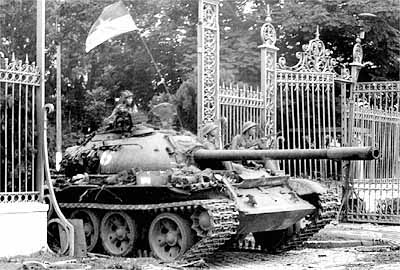
THERE WERE PLENTY OF FAMOUS IMAGES FROM THE VIETNAM WAR, BUT ONE OF THE MOST FAMOUS WAS THAT OF TANKS SMASHING THEIR WAY THROUGH THE GATES OF THE BUILDING NOW KNOWN AS REUNIFICATION HALL. Of course Vietnam was not reunified at the time, and the Reunification Hall was called
Dinh Độc Lập, or something like that. It was the presidential palace of the South Vietnamese republic, and by all accounts was a den of corruption and conceit. By crashing through the gates of the palace after their occupation of the city, the tanks were not only ending the Vietnam War and reuniting the country which had been divided for decades, they were delivering a body blow against crony capitalism. It all happened on 30th April 1975, a day which is a public holiday now in Vietnam (Reunification Day). Conveniently enough, it is one day before May Day, another holiday. The storming of the Reunification Hall has become a potent symbol of the Communist takeover of South Vietnam.
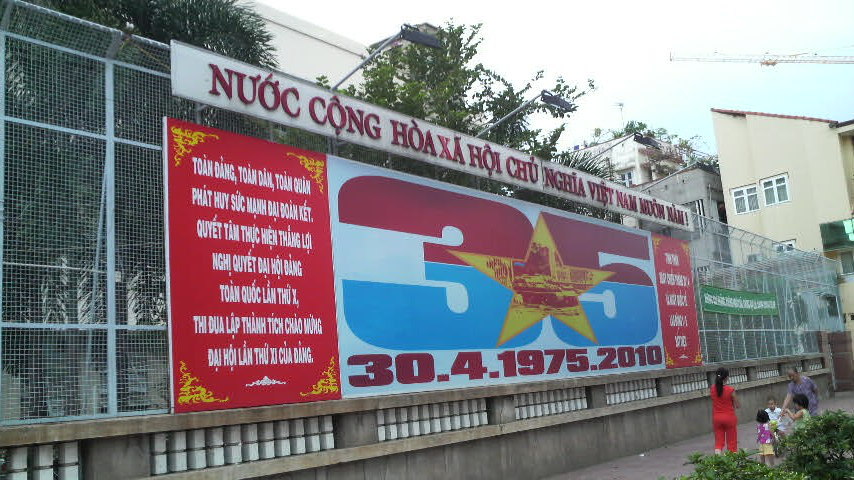
I myself arrived here about 20 years after the fall of Saigon. I might not have realised it at the time, but on that hot harried afternoon in mid 1995 I was gatecrashing a world with the same uninvited violence deployed by the tank crew pictured above, except I was coming at them from the opposite direction. I was the vanguard of the post-Cold War neo-Capitalist invasion. I was gatecrashing a society which had been sealed off from the rest of the world so long, I was literally afraid to get out of my cab. It was just too exotic for me.
ost of them dwelling around Duong Dong, and annually hosts a modest 40,000 international visitors, although there's a Great Leap Forward-style plan to triple that by 2010.
Originally built as the , Reunification Hall comprises of five floors. Watch out the war artifacts that are preserved safely in the Reunification Hall in Ho Chi Minh City in Vietnam. This hall is open daily with an entry fee of 15000 dong for the visitors.
Ciaran and Ruth (from Ireland) write: "A spectacular palace from the outside (see Ruth from it's balcony above), the inside is decked out according to the opulence enjoyed by South Vietnamese President Van Thieu and his predecessors before they made their sudden exit when the North Vietnamese made their entrace. They - unlike us - used tanks to remove the gate. We found an easier entrance, just to the left, where you can be admitted for about 50 cent - it mustn't have been open that day. Maybe the current decorators are exaggerating a bit to demonstrate the counter-socialist ideals of the south before its liberation, or maybe its accurate, but this place is like a cross between the Playboy Mansion and a Bond villain's secret lair. The cinema, game room, snooker tables and piano co-exist with the Map Rooms and underground bunkers decked out with those old Telecom Eireann phones (though I don't think they were the actual suppliers) and enormous radios. It really has the feel of a place Dr. Evil would occupy while plotting his takeover of the world. Probably for more than 1 million dong. That wouldn't even cover the bill in a decent hotel. Or gifts for an engaged couple - though we don't know the price of a good pair of ducks in those days..."
Me and Chairman Mao concurs: "If I was describe it in one word, the word would be "groovy." Really. It was built--and apparently furnished--in the sixties, and since the Communists basically turned the place into a museum the day after Saigon fell, it looks just the same, complete with funky plush chairs and large, circular sofas, which we all know are seriously swinging. Insert your own Austin Powers jokes here, baby! Speaking of which, I guess I should have said "seriously shagadelic?" Talk about missed opportunities ・スc
"Whatever. Here are the palace gates. (Note: if you are looking at these, you are indeed on the side of the palace with the entrance.) Presumable these aren't the gates that were smashed open by a few tanks back in 1975, since you'd think those gates would look slightly worse for wear. And now that I write that, they might have actually been in the bizarre Ho Chi Minh museum we went to one morning. Or maybe those were copies and the original gates were stolen by some enterprising entrepreneurs one night and sold as scrap metal. Probably that's the case:..
The Reunification Hall was built on the site of the former Norodom Palace.
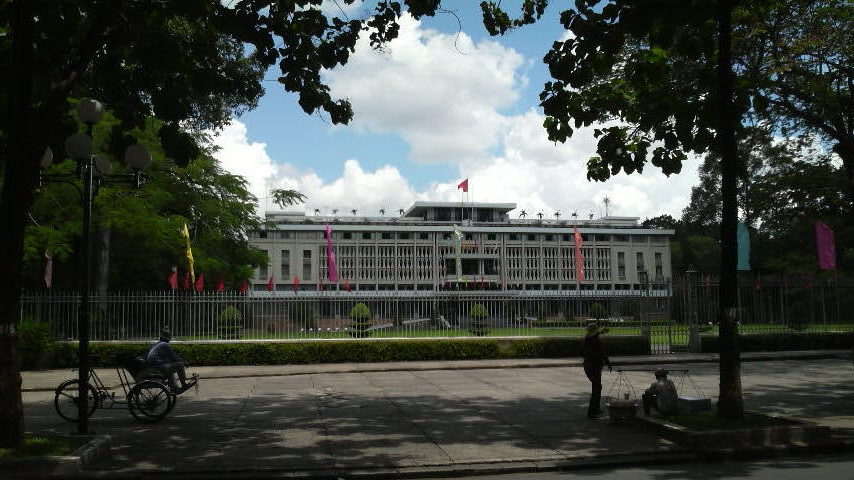
HISTORY
Reunification Hall sits on top of an older wooden palace.
As this Dinh Độc Lập site reports: "In 1858, French Colonialists opened fire to attack Da Nang starting a war to invade Vietnam. In 1867, the French completely occupied six provinces of the South (Bien Hoa, Gia Dinh, Dinh Tuong, Vinh Long, An Giang, Ha Tien). In 1868, the French Government started to have designed and built at the center of Saigon a palace used as the Governor General・スfs Palace and named it NORODOM's Palace. The construction was started on Feb. 23, 1868 and completed in 1871 by the French Governor General in the South of Vietnam named Lagradieøre who placed the first stone. From 1871 to 1887 it was called the Governor General・スfs Palace of the South Part.
"From 1887-1945 many periods of the French Governors General used this building as a residing and working place throughout the Indochina aggressive period.
"On March 9, 1945, Japanese fascists・スf revolution overthrew the French, soly occupied Indochina, Norodom's Palace was the working place of the Japanese Government in Vietnam. From Sept. 1945, the Japanese failed in the II World War, the French returned to occupy the South part, Norodom・スfs Palace was the working office of the aggressive war machinery of the French in Vietnam.
"On May 7, 1954, the French Colonialists lost heavily in Dien Bien Phu campaign, after that they were obliged to sign Geneva Agreement and withdrew from Vietnam. The American tried to jump in to carry out their attempt to invade the South , Vietnam was temporarily divided into 2 regions, the North was under the regime of the Democratic Republic of Vietnam, while the South was the Republic of Vietnam.
"On Sept. 07, 1954 Norodom Palace was handed over between the French Government representative-General PAUL ELY and Saigon ruling representative-Prime Minister Ngo Dinh Diem. Ngo Dinh Diem decided to change the name of the Palace to the Palace of Independence. Since then the Palace of Independence became the residence of Ngo Dinh Diem・スfs family and a place witnessing many political events. Ngo Dinh Diem maintained a family ruling dictatorial regime, he pushed the people into strategic hamlets, carried out the 10/59 law bringing guillotines to all over the South, he did not only cause indignation among the people but also caused disagreement within the Government cabinet of Saigon.
power, water, construction and the airport are being addressed by the island and will be up to standard by 2011. ..."
THE CULTURAL PARK
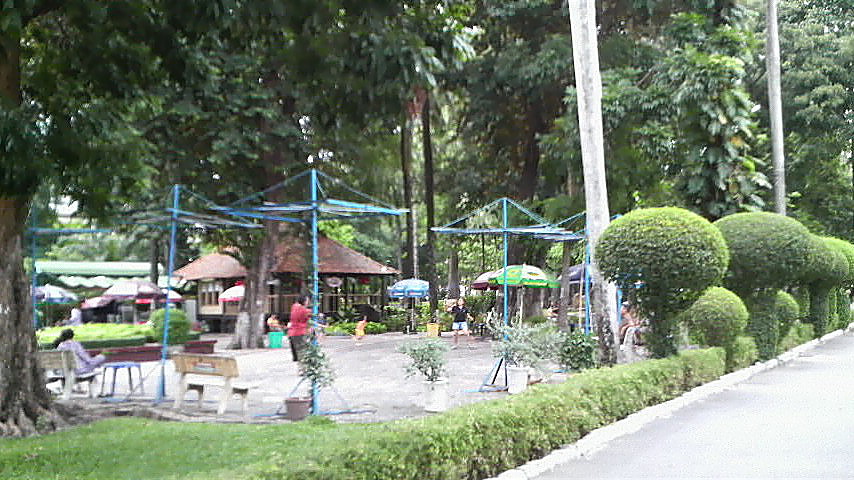
Behind the grounds of the Reunification Hall, heading away from the heart of the city, is another green space called the Tao Dan or Cultural Park. While the Reunification Hall is a pretty official place and is generally off-limits to locals (unless you are an outstanding citizen or a Communist boy scout and the Government is handing out medals that day), the Cultural Park is a place for the people. In early evenings, a procession of joggers and walkers orbit the perimeter, all working hard to stay fit. In keeping with its name, the park is dotted with sculptures and reminders of Vietnamese glory. There is a circus, scaled down Cham tower done in tiny red bricks, a cinema, a vivid temple and a handsome building which seems to be home to water puppet shows. Water puppetry is big in north Vietnam, but there are some places you can see it in Ho Chi Minh City. One such place is the Rồng Vàng (Golden Dragon) Theater, inside the Cultural Park. Water puppet statues flank the entrance.
Ngoc Dung Guesthouse US$8 Check rates online
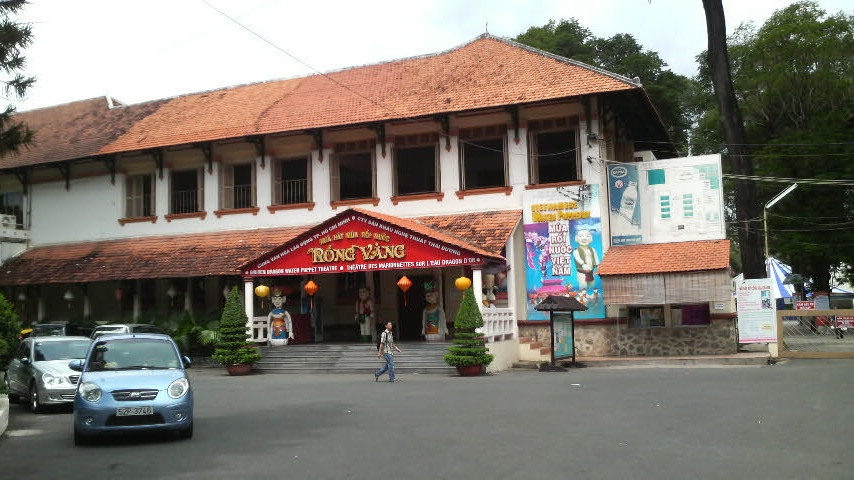
Rồng Vàng Theatre (55 B Nguyen Thi Minh Khai St, on the northwest side of the Cultural Park) is one of the few places in Ho Chi Minh City where you can see water puppet shows. There are 2 shows every evening at 5.30pm and 6.30pm; each show lasts 50 minutes. Some foreign tourists have complained that the show is boring and difficult to understand. Some other foreigners claim it is a wonderful cultural experience. One website has promised to book you seats for US$14, but I've heard you buy tickets for a more reasonable $4 from the Post Office. You can book seats at the theatre itself for about 70,000 Dong. 80,000 Dong, 100,000 Dong or even 150,000 Domg, according to various sites on the Internet. It's still cheap whatever the price. You can take your camera or video camera inside for no extra fee.
Xem Bản đồ cỡ lớn hơn
The beach in the picture is called Bai-sao and is with out doubt one of the most amazing beaches i have ever seen. We spent the time clearing the jungle and putting up a wall around the block to keep it from being moved in on by the fisherman, the rest of the time was enjoyed by drinking the local rum which at $1.50 a bottle was not to bad at all... Well from what i can remember it was not. Over time i will post more pics from the island.. and keep you posted as to when you can come over and enjoy the white sand crystal clear water and very cheap local rum for yourself."
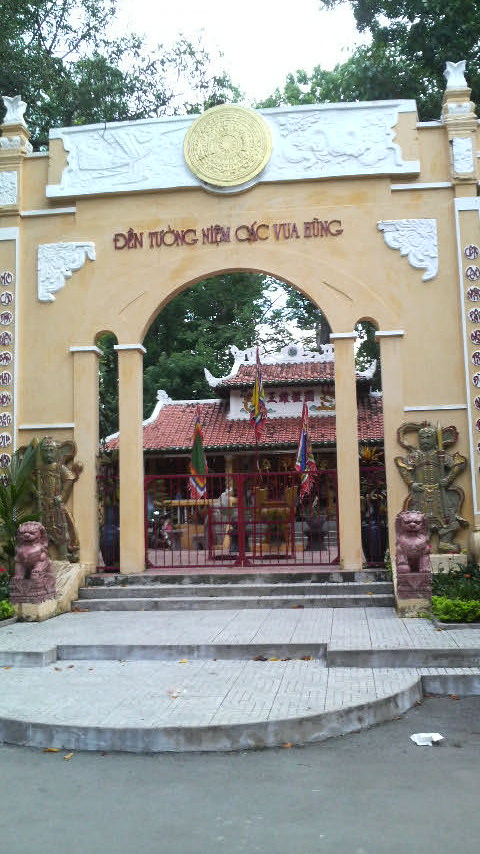
The gate reads Đền tưởng niệm các vua hùng. I am not sure what it means, but it could be something like "Temple of the Hung Kings". In any case, Đền means "temple", and hùng means "brave" in Vietnamese. The Hung kings are worshipped at shrines like these as the founders of the Vietnamese nation, Flanked by fierce lions and guards brandishing swords, holding the fate of millions in their hands. Bonsai trees, rivers, streams, channels are .
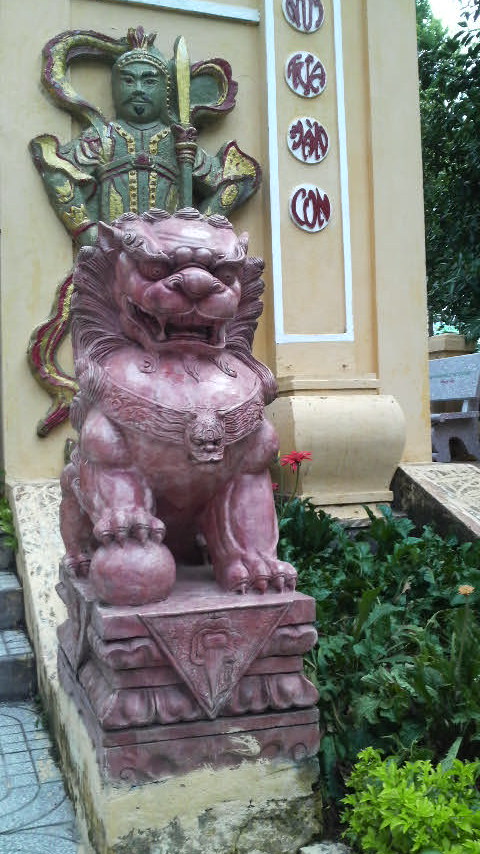
Taking and meeting tourist services at Thien Hai Son Resort.
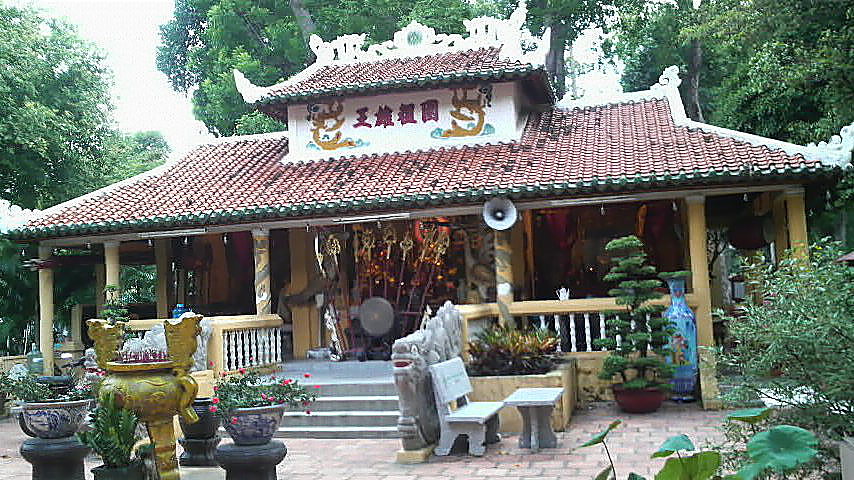
Government megaphone notwithstanding, this temple displays nearperfect symmetry..
Saigon Phu Quoc Resort. Saigon Phu Quoc resort is the first Vietnam's three-star island resort with 90 well-equipped bungalows and apartments of international standard. The Phu Quoc Island and resort offers pristine beaches and forests to all nature lovers and travellers, making the your stay there a memorable time.
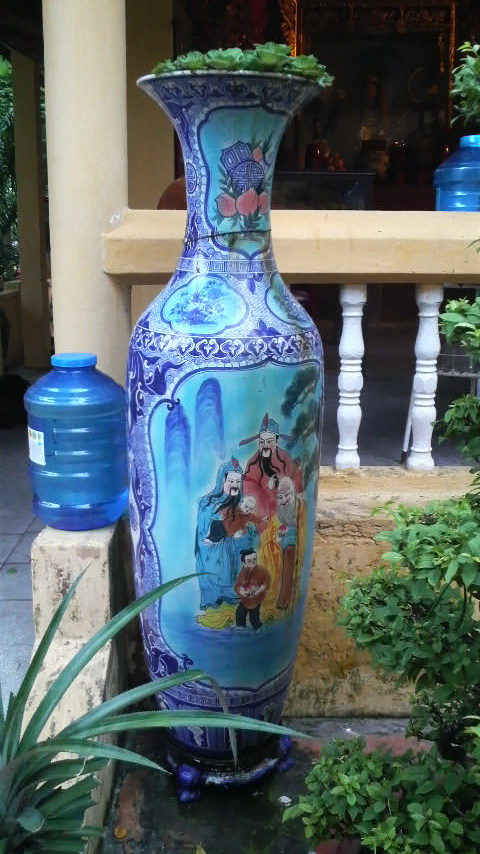
Are these the Hung kings? Who is this baby? Is he in the infant Sung Lam (who renamed himself
Lac Long Quận upon ascending the throne)? The limestone karsts painted on the vase are a classic oldschool North Vietnam/southern China backdrop, and that is the region where the ancient Hung Kings ruled. The more you get to know a country and its history, the more interesting it becomes!
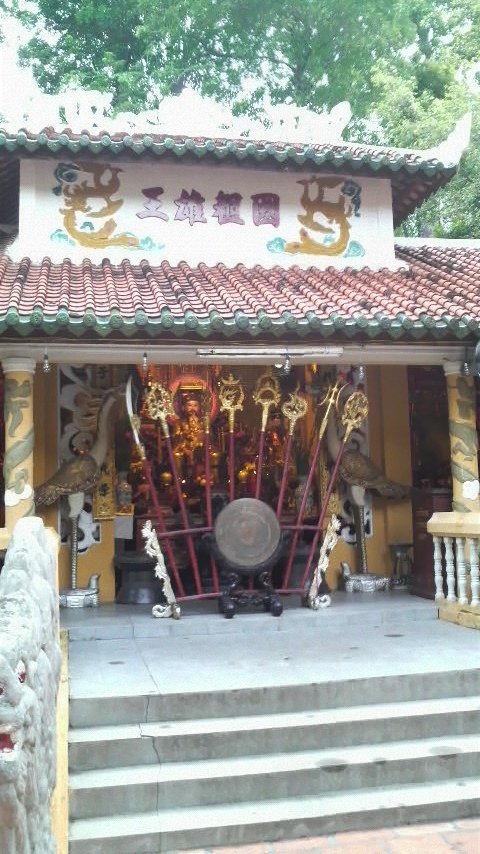
Lac Long Quận means the "Dragon Lord of Lac", and dragon motifs abound at the temple seemingly built in his honor. There are also plenty of birds and/or phoenixes as well. Apparently the dragon and the phoenix usually go together at East Asian temples, they complement each other like yin and yang. The dragon is considered male, and the phoenix female. Interestingly, the ancient Vietnamese believed they were born from the procreation of a dragon and a fairy, back in the time of the Hung kings. That dragon was none other than Lac Long Quận, and the fairy was a birdlike goddess called Au Co.
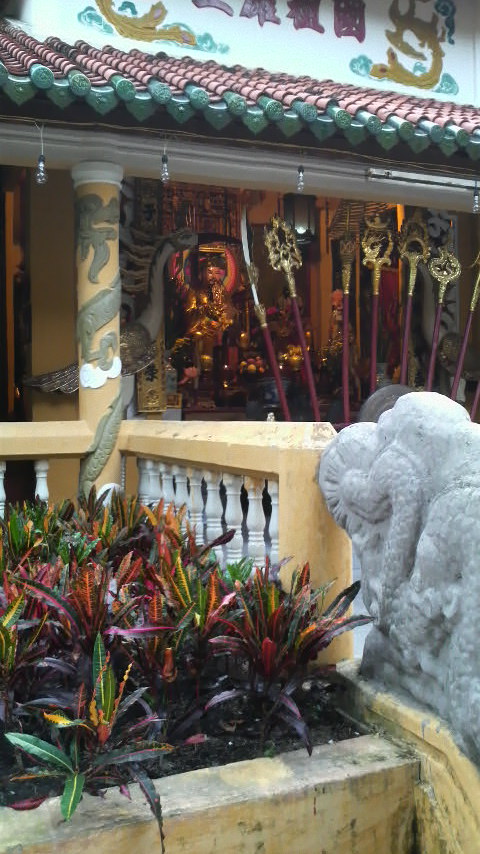
Au Co was daughter of the birdking Đe Lai, and is revered today as the mother of Vietnamese civilization. Perhaps this explains all the bird motifs which can be seen at this temple. Even the tiles on the roof look like birds' claws. Regardless, the name Au Co appears in a plaque set in the yellow interior wall... right alongside the name of Lac Long Quận/.
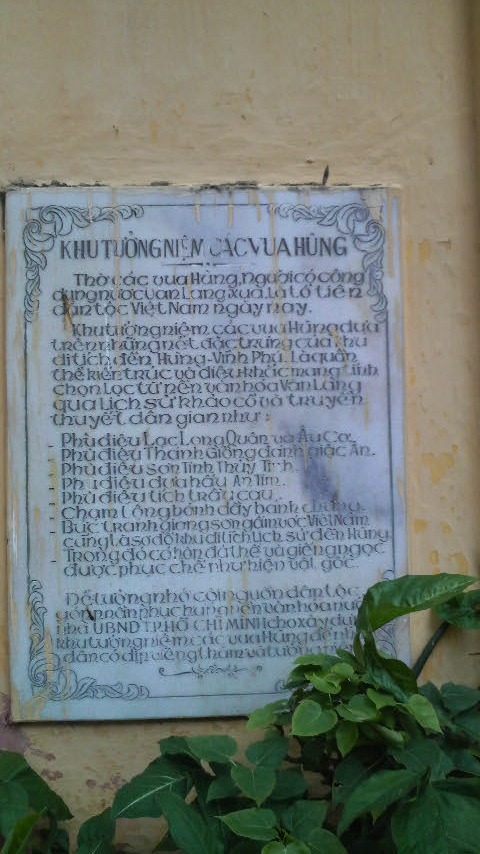
Just like the Reunification Hall to its east, the Cultural Park has a nationalist objective to fulfil. It might not seem very Communist with its gaudy temples and ancestor worship, but the park nonetheless serves to bolster the Communist regime. Look around Ho Chi Minh City, in fact, and you will find it packed to the gills with Communist propaganda. It is not in your face as much as it would be in some parts, but it is there all the same... all around you. A large number of the streets are named after former Communists, or historical patriots who are favored by the Communist Party today.
. What struck me more than anything, after so long an absense, was the plethora of hotels and executive living arrangements which have sprung up, particularly in the Saigon district. One development which is already up and running and attracting attention from the Ho Chi Minh City expat community, is Sedona Suites. Located on Le Loi Boulevard within walking distance to many banks, airline offices and entertainment options, Sedona Suites is a sanctuary of elegance and style that combines the comforts of home with the convenience of hotel facilities (that's a lift from Holiday City.) There are 89 one to three-bedroom units; room facilities include: satellite television,
local & IDD telephone,
bathroom with long bath and separate shower compartment,
wardrobes,
Intercom,
laubinet and oven.
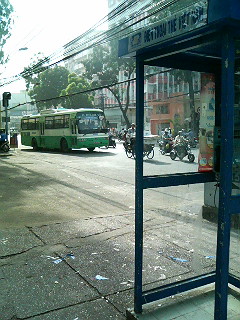   
"In the near future we should see the completion of more high rise luxury apartments, shopping centers and hotels. The $265 million Kumho Asiana Plaza project finally resumed in October after being delayed for 10 years. It sits on the site that used to be Saigon Square, and is due to be completed in 2009. Saigon Happiness Square is a massive development underway that I mentioned before in D5. It's costing its Taiwanese investors $468 million, containing offices, shopping and a hotel. Saigon's tallest building is also under construction...
"On top of this newly shaped city center, the construction of the Saigon Metro system should finally have begun. As the widely read International Railway Journal stated in September 2004:

"Deputy Minister of Natural Resources and Environment Dang Hung Vo joined many economic experts in expressing optimism for the real estate market in 2007 after a two year freeze period.
"He said these factors enhanced Vietnam's attractiveness for foreign investment, including investment in real estate.

AS IN ANYWHERE ELSE IN THE WORLD, LOCATION IS A VERY IMPORTANT FACTOR IN CHOOSING WHERE TO BUY OR RENT IN HO CHI MINH CITY. If you are new to this place, then perhaps a geography lesson is not out of place here. According to Easy Property, one of Vietnam's largest real estate agents, there are certain parts of town which are favored by expatriates. They include the CBD (Central Business District) of Districts 1 & 3 (for the convenience, naturally), and the greenery and clean air of the An Phu, Thao Dien, Binh An Wards of District 2 (just over the Saigon Bridge @15-20 minute drive).
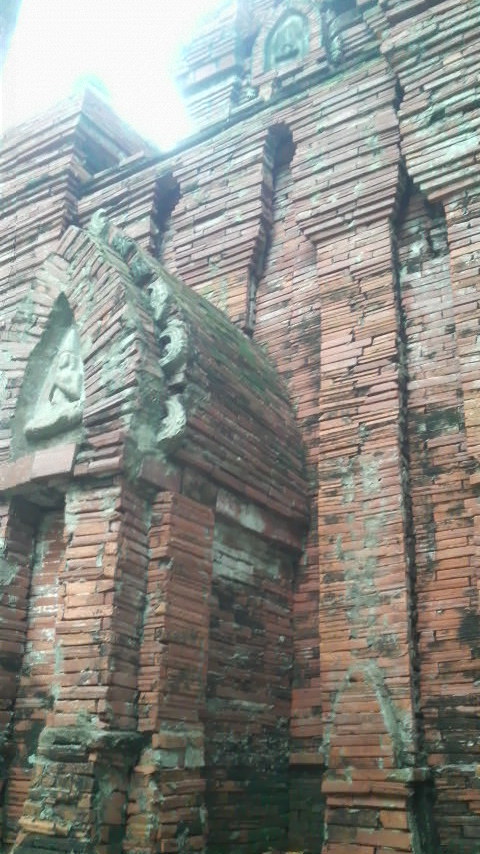

<< o n l i n e + r e a l t o r s
Bat Dong San: www.tinbatdongsan.com/vn/.
BẤT ĐỘNG SẢN is of course Vietnamese for real estate, and from a SEO perspective at least, this site has the market cornered. Viewable in English and Vietnamese, the site includes a law library, news feed and brokerage service. As the site reads: "You have properties and want them to be sold out or rent out quickly?
"You are very busy to sell or rent them?
"Let us do that for you.
"With reasonable fees 1% of total value for each sold property or 1 month rental for each leased property or you allow us to earn the markup value if you don・スft want to pay the above fees.
"Just fill out the Form then send to us with 1 – 8 photos of your property to: info@tinbatdongsan.com..."
Chao Co: Phone: 84-913-804-550. Web: www.chaocom.com. Email: davidhousing@gmail.com.
This website, written in English and Japanese, prvides a full range of services for expats in Vietnam -- from real estate to car rental and travel plans, to business investment consultancy.
Craig's List: http://vietnam.craigslist.org/rfs/.
Like other invaders from the past, Craig is on his way to conquering Vietnam. Well, at least the classified real estate market in Vietnam (and they say that land equals power!) For the latest offerings from Ho Chi Minh City, hit Craig up.
Easy Property: Phone: 848/840 7962. Web: www.izproperty.com/.
This website touts itself as Vietnam's premier real estate services network. It is a big claim to make, but the listings at Easy Property are in a word, exhaustive. A huge range of properties are listed, ranging from serviced apartments in District 3 (the rent is between US$1100 to $2100 a month) to potential golf course sites in Dong Nai Province, to the entire Hoa Binh Towers in the capital Hanoi, to "possibly the best villa in An Phu" (that one is going at US$6000 a month in rent.)
Along with all the listings, Easy Property has realms of important information about the state of the rental and real estate market in Vietnam. There are nuggets of information like this, concerning international standard serviced apartments: "Ho Chi Minh City only has a combined stock of serviced apartments of about 2,000 units, an inadequate number relative to the ever increasing demand. Thus rentals have almost doubled in less than 5 years to the current levels. However, local investors have recently seen the investment opportunities available and are thus now rapidly filling the supply gap with a wide variety of new developments, both big and small. By the end of 2006, it is estimated that the number of units available will have doubled to over 4,000 units with several thousand more under construction. Though many of these are being built for sale on the local market (foreigners are unable to buy or sub-lease), many are being bought to rent to expats, at prices ranging from USD$800 – USD$2,700 per square meter, with a view to obtaining rentals from USD$10 – 30 per square meter per month.
"However, given the relatively stable number of expats living in Vietnam, coupled with strict new foreign employment registration stipulations, and the dramatic increase in stock, one can foresee rentals falling to levels more in line with those of ASEAN regional competitor cities over the course of the next few years.
"The largest and best located serviced apartment buildings with the widest range of facilities and services were constructed in the mid to late 1990's by foreign developers with deep pockets – typically USD$20+ million Joint Ventures. Since then, very few foreign investors have ventured into the domestic market. These established buildings have all had average occupancies of over 90% since @2002 and so are able to command premium rentals. Some offer short term accommodation (at up to USD$50/sqm per month) but many have waiting lists and so are only interested in minimum 12 month contracts. The majority of these are in the downtown area but some are a 20 minute commute."
"There are similar developments in the central region around Dalat, and in the north, particularly in Hanoi. We intend to expand these pages over time to cover the nation."
"
The site boasts a section called Monday in Saigon, a photographic database of developments in the business capital over the years. Monday in Saigon promises:
"Many people interested in Vietnam, both those living here and abroad, enjoy photos of boys on water buffalo, women in conical hats of straw, street vendors hawking almost everything, the polychrome vistas at outdoor markets, and the fast-moving motorized traffic, peppered with ox-drawn carts.
"Foreign and Domestic visitors to HCMC rarely lift their heads up to see all the new signs of economic growth. Most are too busy running and dashing about, looking forward. Particularly when driving or crossing the streets of this bustling metropolis, rarely do we lift our eyes to see what has grown around us.
"The V V G Staff began taking photos for these pages in December 1997. We are constantly updating them to keep up with developments. The most recent photos were taken only days before this page was last updated.
"Here are photos of vertical construction. We want potential investors to see the City of today and tomorrow, not just yesterday. Every new building pictured has been completed in the past four years. We also show buildings in which construction waits to recommence, and sites where it has not ever begun. A few older structures recently renovated are also shown simply to retain the flavor of what is still Saigon."
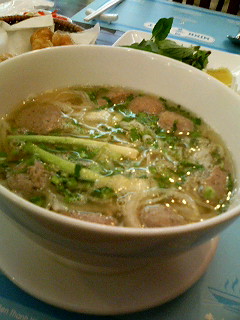   
h i g h r i s e + d e v e l o p m e n t s
ONE OF THE AMAZING THINGS ABOUT VISITING HO CHI MINH CITY REGULARLY IS NOTICING JUST HOW FAST THE SKYLINE OF THIS CITY CHANGES. New buildings go up all the time, transforming this once low-rise sprawling tin shack kind of city into another Oriental supermetropolis -- another Bangkok or Singapore. Inside those high-rise steel and glass needles are often where foreign residents prefer to live. If you want to know about coming developments of a high-rise nature, you are in the right subdirectory.
Before we start, here is a word from San Francisco architect Mel Schenck, who wrote: "Most of the housing in Ho Chi Minh City, like all of the other cities in Vietnam, is four or five stories tall. This is true for new middle-class houses even in the smaller villages. I understand there is some new high-rise housing in Hanoi in the new suburban new urban areas, but I did not get out to see them. In HCMC, some Taiwanese investors built a new high-rise apartment complex in the Cholon (Chinese) area of Saigon. Very few of these apartment or condo units have been rented or sold. In speaking with some HCMC citizens, they felt that they had not sold because the units are too expensive compared to normal units in Saigon, and the Vietnamese much preferred the walk-up four-story houses to the elevatored high-rise housing. This is certainly counter to the Chinese pattern of replacing low-rise housing in all of their cities with high-rise housing.
Interestingly, the density of population per hector or acre for these high-rises is about the same as low-rise housing since these new high rise towers are usually towers in the park with a lot of space (usually wasted, in my opinion) around them. I vote with the Vietnamese -- I prefer my density in active low-rise units rather than sterile units in the sky, unless the high-rises are as dense as in Hong Kong."
<<
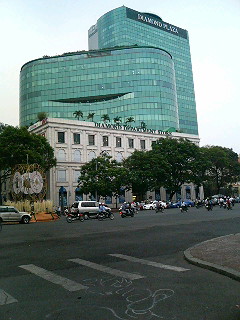 Diamond Plaza: 34 Le Duan St (corner of Pham Ngoc Thach St), District 1. Phone: 848 825 7750. Email: ibcourt@diamondplaza.com.vn. Web: www.diamondplaza.com.vn/. Diamond Plaza: 34 Le Duan St (corner of Pham Ngoc Thach St), District 1. Phone: 848 825 7750. Email: ibcourt@diamondplaza.com.vn. Web: www.diamondplaza.com.vn/.
When I first noticed this huge green building during my most recent visit to Vietnam, my thought was: "Is that whole building dedicated just to diamonds?", especially because there seemed to be a gem shop visible on the first floor. Of course, Vietnam is not really a player on the diamond front, and the Diamond Plaza is not a glorified Bangkok style stone ripoff joint. In fact, it is reportedly one of the hottest addresses in town and is like a city within a city as well as a retreat from the mania of the streets, a little enclave of internationalism. As its managers claim, Diamond Plaza is an integrated development, the largest in Vietnam, with entertainment, shopping, apartments and offices all under the same roof:
"Our landmark building overlooks many of the City's famous sites, including the Reunification Palace, Notre Dame Cathedral and April 30th Park, the City's most mature green space.
"Diamond Plaza's one, two, three and four bedroom fully furnished, serviced apartments are amongst the most spacious in Vietnam, having internal net areas of between 83-240 square meters. The size and luxurious finish to these apartments, together with the fantastic views of the city they offer, have quickly allowed Diamond Plaza to achieve the status of Ho Chi Minh City's premier residential address.
"All apartments are fully air-conditioned and free internet access is now offered to all Tenants. For convenience, parking is located in the basement of the building. To complete the total sense of well being associated with residence at Diamond Plaza, membership to the executive fitness club and 14th floor terrace swimming pool is provided at no charge, as a part of the tenants' package."
<<
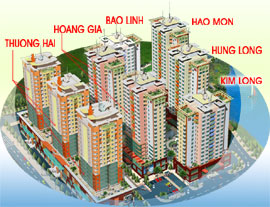 Hoang Quan Plaza: 34 Le Duan St (corner of Pham Ngoc Thach St), District 1. Phone: 848 825 7750. Email: ibcourt@diamondplaza.com.vn. Web: www.diamondplaza.com.vn/. Hoang Quan Plaza: 34 Le Duan St (corner of Pham Ngoc Thach St), District 1. Phone: 848 825 7750. Email: ibcourt@diamondplaza.com.vn. Web: www.diamondplaza.com.vn/.
Plaza seems to be the buzz word of the decade in Vietnam, it creeps up in development names as insidiously as "Hills" does in Tokyo, Japan. There are any number of "plazas" in Ho Chi Minh City and greater Vietnam at the moment, none of them true plazas in the Italian sense of the word. It doesn't matter, because Tokyo doesn't really have any real hills (unless you count tall buildings as hills.) In Asia these days English or Italian or French words are only used for decoration, the same way westerners cook Asian dishes at home without comprehending the cultural matrix from which they sprung. Postmodern, but potlatch it ain't.
This particular non-plaza is located in the going off south of Ho Chi Minh City, near the Nguyen Van Linh highway.
Comforts:
- The apartments are designed luxuriously, modernly, and warmly.
- Restaurant, health care center, swimming pool, recreation-shopping center, kindergarten, park, basement garage, ・スc
- Professional management board and security staff make sure 24/24 security.
- Intercom/Video phone systems help the hosts to easily identify their guests.
- Elevators and stairs are set up reasonably to make sure thorough and safe transport.
- Central gas and American technological Notifier automatic fire alarm systems are installed at each apartment.
- Intelligent cool and light systems.
The Panorama.
The Panorama tọa lạc trong khu Kênh Đào (được mô phỏng theo Khu Kênh Đào tại Mỹ) vốn dĩ từ lâu như tự hữu một �chiếc máy điều hòa khổng lồ�Etừ thiên nhiên cảnh quan bao quanh. Trong đó, tự nhiên sắp sẵn những hình khối theo �tone�Exanh chủ đạo với nhiều biến tấu: gam xanh của dòng sông cảnh quan dọc theo thế đất, bên kia sông là mảng xanh dự kiến quy hoạch sân Golf 36 lỗ; trên là bầu trời trong vắt nối liền hai mảng xanh ấy như một đường chân trời xa xa mà khoảnh khắc nào trong ngày cũng có thể tận hưởng; gần hơn là hai mảng xanh công viên đô thị rộng với diện tích cộng gộp gần tròn 16ha gần như viền gọn ôm Khu Kênh Đào ở giữa. Có ví von Kênh Đào là một �thành phố của cảnh quan và gió�Ethì cũng chẳng có gì là quá bởi sự giao hòa của thiên nhiên hoa lá, sự kết hợp mặt nước, bầu trời, sự gặp gỡ của nắng, của gió và bản hòa tấu của những âm thanh tự nhiên như tạo nên một bức tranh đẹp đưa luồng gió mát ùa vào từng ngôi nhà trong Khu Kênh Đào. Trong cảnh sắc ấy, The Panorama sang trọng với 6 building kiêu sa vươn cao ngay cửa ngõ phía Tây vào Khu Kênh Đào.
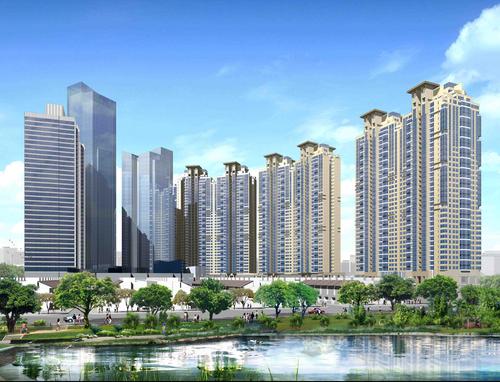 Saigon Pearl: 92 Nguyen Huu Canh Street, Binh Thanh District. Phone: 848/821 9999. Web: www.saigonpearl.com.vn/home.htm. Saigon Pearl: 92 Nguyen Huu Canh Street, Binh Thanh District. Phone: 848/821 9999. Web: www.saigonpearl.com.vn/home.htm.
According to the promotional material, Saigon Pearl, a high-rise apartment complex on Saigon River, represents "the largest, most elaborate development ever created in Vietnam." Due to come online from 2007 to 2009, Saigon Pearl incorporates eight 37-storey apartment buildings, a lavish clubhouse, two office towers and a large-scale shopping mall. Quoting from that promotional material again: "Picture living right beside the enchanting Saigon River, surrounded by a tropical paradise of natural and landscaped gardens. Watching clouds of mist swirl across the water as you prepare for the day ahead. Here, secluded from the rush and roar of daily life, the natural beauty of the scenery constantly seduces you..."
The following properties are available for sale: two-bedroom unit, three-bedroom unit, and penthouse. Visit the website listed above to find about pricing and other details.
<<
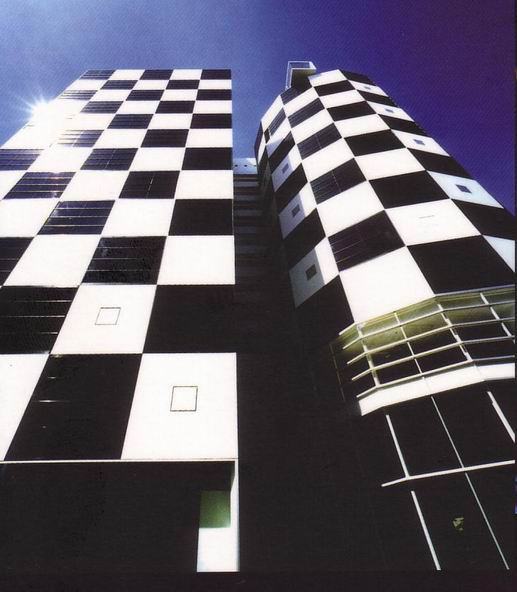 Zen Plaza: 54-56 Nguyen Trai Street, District 1. Zen Plaza: 54-56 Nguyen Trai Street, District 1.
Zen Plaza is a 14-storey tower in the heart of Saigon consisting of an 8-storey shopping complex, five floors for offices and a penthouse for events. Hit Chaocom if you are interested in hiring some of that office space. You will also be able to see floorplans and a price list. The building itself is something of a landmark with its distinctive black and white facade, and is a popular meeting place. I myself was due to meet Jennette, a local Chinese lass, outside the front of Zen during my visit back in March 2007, but the venue was changed to Ben Thanh Market. True to the Japanese sounding origin of the tower's name, on the 7th floor of the Zen Plaza you will find the Sushi Bar, whose motto is "not only tasty but funny". In fact, this whole building is like a little chunk of Japan dropped into the heart of Vietnam, and thriving in its new environment. At Zen Plaza, the emphasis is on fashion.
According to the Ho Chi Minh City People's Committee: "In August 1999, Nhat Nam Shopping Center was put into operation as a joint venture between Vietnamese and Japanese partners. In August 2002, the Ministry of Planning and Investment endorsed the plan to turn the joint venture into a 100% Japanese-owned project, and in October 2003, Zen Plaza came into being.
"The difference between Nhat Nam and Zen Plaza is that Zen specializes in fashion. 'We see Vietnam's potential in this industry,' Fukukawa says. 'First, many more Vietnamese are interested in fashion as the economy develops.' Another reason for Zen to be a fashion center is because this 12-story building is on the part of Nguyen Trai Street dubbed Saigon's fashion street. A third reason is that Vietnam has a strong garment industry and a contingent of young and talented designers.
"However, these young designers are encountering difficulties in developing their career. 'They lack professional training, lack materials to realize their creations, lack a stage to make the public know about their designs and lack capital for start-ups,'
Fukukawa says.
"One of Zen Plaza's ambitions is to help bridge these gaps by providing young designers with finance and space so that they have a place to show their creativity. Zen is one among a few organizations in Vietnam to hold regular fashion shows. These shows always feature young designers. 'We were a co-organizer of the Vietnam Collection Grand Prix 2004, the biggest stage for Vietnam's young fashion designers,' he says.
"In 2005, Zen Plaza will push its plan to produce garments under the Zen brand. Japan and some other countries are the target markets. 'Some foreign customers are interested in Vietnamese designs for sale at Zen Plaza,' he says. 'But sizes are a big problem. We all know that measurements of Europeans are quite different from those of Vietnamese. Therefore, we must pay attention to this difference...'"
   
c o m i n g + d e v e l o p m e n t s
THERE IS ALWAYS SOMETHING GOING ON IN HO CHI MINH CITY, SOME NEW DEVELOPMENT OR MAJOR PUBLIC WORKS PROJECT. Here are some of the latest developments and coming attractions:
<<
 Asiana Plaza: 39 Le Duan Boulevard, District 1.
Asiana Plaza: 39 Le Duan Boulevard, District 1.
If you think the name of this 13,600 square metre complex has a vaguely Korean sound, you would be right: it was developed by a partnership including Kumho, the 8th largest conglomerate in South Korea and the owner of Asiana Airlines. As with all great developments there has been a lot of controversy with the development of Asiana Plaza, but at the start of 2008 I did a walkby of the site with my new Vietnamese girlfriend, and it seems to be coming online. Surrounded by Le Duan, Hai Ba Trung, Nguyen Du and Le Van Huu streets, Asiana Plaza when finished will comprise a luxury apartment building, a five-star hotel and retail stores.
As VietnamNet reported: "As planned, Asiana Plaza, invested in by Asiana Plaza Saigon, a member of the Republic of Korea's (ROK) Kumho Group, has the total investment capital of $223mil. The complex will cover an area of 13,632 sq m at No 39 Le Duan street in district 1, the most advantageous position in the city, which many investors have been eyeing.
"The complex will consist of three buildings, including a 21-storey office building, a 21-storey international hotel, a 32-storey apartment building, and a trade centre area.
"The complex will be situated near other high-grade buildings of the city, including Diamond Plaza, Sofitel Hotel, Prudential's office building, Saigon Tower and Metropolitan. It will also not be far from the buildings of the US and French General Consulate, Cathedral and the city's Post Office. Located in such a position, the complex will be especially valuable and it is hoped will bring a new face to the city.
"Bok Sang Chang, Director General of KumhoAsiana Plaza Saigon, is optimistic about the business performance of the project once it becomes operational. He said that the demand for accommodation and apartments will increase sharply when more and more foreign investors come to Vietnam in the coming time. InterContinental Hotels, which is well known in the world for hotel management, will manage Asiana Plaza・スfs hotel and apartments.
"Mr Chang said that the operation of the complex will serve as an opportunity to develop tourism in Vietnam. Kumho is planning to set up a golf course in HCM City, and cooperate with Kumho Airlines and Korea Airlines to carry passengers from the ROK and China to HCM City.
"In the immediate time, the construction of the project will generate big demand for services, while creating several hundred jobs for city residents until 2009..."
River Garden: Ho Chi Minh City (HCMC), District 2.
This development, which is anticipated to be completed in April 2008, will feature 36 two and three-bedroom units overlooking the Saigon River. The facilities will include: outdoor swimming pool, tennis court, badminton court, basketball court, handball court, children窶冱 playground, open restaurant, bar-cafテゥ, bowling, gym & health club, steam bath & sauna, beauty salon and multi-purpose hall. For more details, click here.
<<
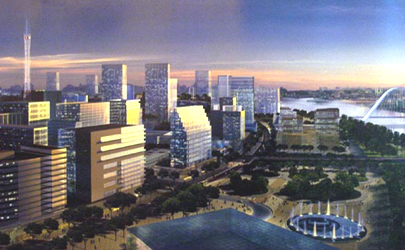 Thu Thiem Peninsula: Major development plan. Thu Thiem Peninsula: Major development plan.
Earlier this year (2006) the HCMC Government unveiled plans to turn the Thu Thiem Peninsula across the Saigon River into a new center. The Thu Thiem new urban area will be HCM City's center for finance, commerce and services, officials said at a press conference on the announcement of the detailed plans for Thu Thiem. "Thu Thiem will be a modern center, an extension of HCM City's existing downtown," said Vu Hung Viet, head of the Thu Thiem Investment and Construction Authority, or Thu Thiem ICA.
Thu Thiem will be divided into five zones: a central zone, a multi-functional zone along the East-West Highway, a northern residential zone, an eastern residential zone, and a swamp zone to the south.
The central zone, which will become a commercial and financial centre, will house multi-storey office buildings, a convention centre, and a central plaza and public park. This area is expected to be complete by 2010.
The central zone is expected to employ the largest number of people and house 40,000 residents.
The so-called swamp zone to the south will eventually house a botanical garden, an aquatic park, a sports centre, an arena and a resort hotel.
The existing mangrove swamps in the area will be preserved as part of the cultural heritage of Thu Thiem and Ho Chi Minh City.
Public transport will include a subway line and station in the central zone, and bus and waterbus services that would link the area with District 1.
Five bridges over the Saigon River will be built, including the Thu Thiem and Ton Duc Thang bridges, a bridge to link the peninsula with district 2, and another to connect the area with District 7.
A pedestrian bridge over the river will link Me Linh Square in District 1 with Thu Thiem.
The eastern residential zone and most of the central zone will be built during the first five-year phase.
The second phase, from 2010-2015, will develop 180ha of the central zone and the multi-function zone along the East-West Highway.
The third phase from 2015 to 2020 will develop 87ha, and the fourth phase from 2020 to 2025, 120ha.
|













